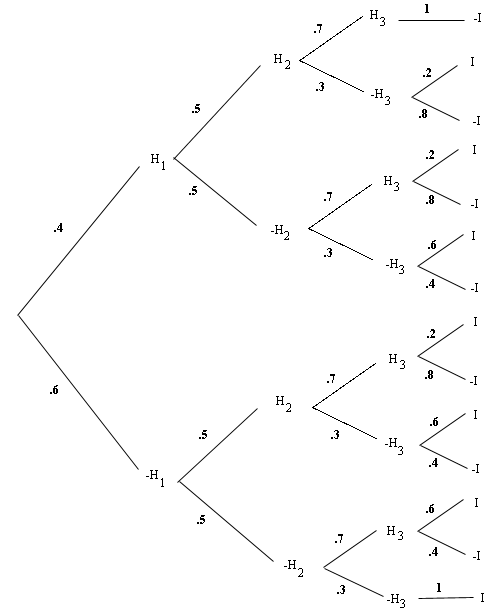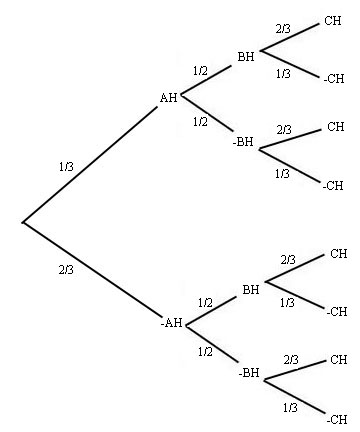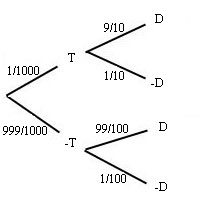
I
Let's construct the tree
Let H1 be 'the first missile hits the asteroid'; H2
"the second missile hits the asteroid"; H3 "the third
missile hits the asteroid"; and I "the asteroid remains intact."

The probability that the Earth will be saved is given by the probability
that the asteroid will not remain intact. Hence, all we have to do
is to calculate Pr(-I).
Pr(-I) = 0.14 + 0.048 + 0.112 + 0.024 + 0.168 + 0.036 + 0.084 = 0.612
II
Let's construct the tree, where AH is "A hits"; BH is "B hits"
and CH is "C hits."

1. Pr(exactly one hit) = (1/3)x(1/2)x(1/3) + (2/3)x(1/2)x(1/3) + (2/3)x(1/2)x(2/3) = 7/18
2. By Bayes' theorem, Pr(BH| exactly one hit)= Pr(exactly one hit|BH)x
[Pr(BH)/Pr(exactly one hit)]
Since the shots are independent, Pr(exactly one hit|BH)= Pr(-AH &
-CH) = (2/3)x(1/3) = 2/9
So, Pr(BH|exactly one hit) = (2/9)x[(1/2)/(18/7)] = 2/7
III
Let's construct the tree, where T is "the subject has Tuberculosis" and D is "the subject is diagnosed with Tuberculosis."

By Bayes' theorem, Pr(T|D) = Pr(D|T)x[Pr(T)/Pr(D)]. But,
Pr(D|T)= 90/100;
Pr(T)= 1/1000;
Pr(D)= (90/100)x(1/1000) + (999/1000)x(1/100) = 1089/100000.
So,
Pr(T|D)= (90/100)x(1/1000)x(100000/1089) = 90/1089, i.e., 0.0826.
Notice, however, that if one were to have two positive x-rays, the probability of having tuberculosis would rise to nearly 1 (you can check this out on your own!).